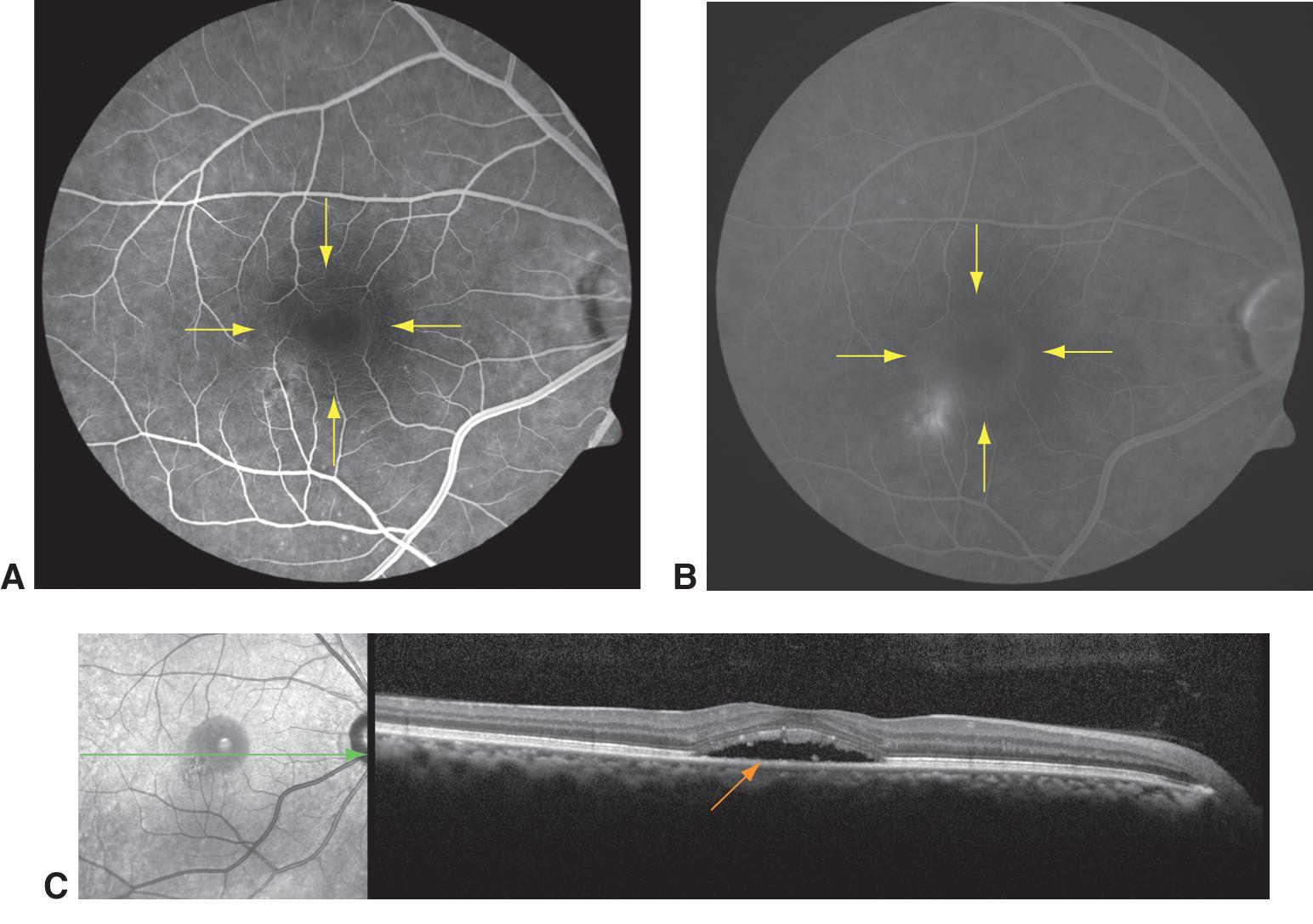
Central Serous Chorioretinopathy Retina Consultants
Central serous chorioretinopathy (CSCR) is a retinal disorder characterized by localized serous detachment of the macula with or without focal serous pigment epithelial detachment (PED). It is mostly seen in young men aged 20-45 years.[1] Albert V Graefe first described this condition as central recurrent retinitis in 1866. Bennet coined the term "central serous retinopathy," and Gass.

Central Serous Chorioretinopathy Retina Centre
Central serous chorioretinopathy (CSCR) is a relatively common cause of visual impairment in the Western world, and is characterized by the accumulation of subretinal fluid in the macula. 1,2 The disease classically affects men between the ages of 20 and 50 and has been associated with corticosteroid exposure, phosphodiesterase inhibitor use, obstructive sleep apnea and "type A.
Central Serous Chorioretinopathy American Academy of Ophthalmology
Central serous chorioretinopathy (CSC or CSCR), also known as central serous retinopathy (CSR), is an eye disease that causes visual impairment, often temporary, usually in one eye. [1] [2] When the disorder is active it is characterized by leakage of fluid under the retina that has a propensity to accumulate under the central macula.
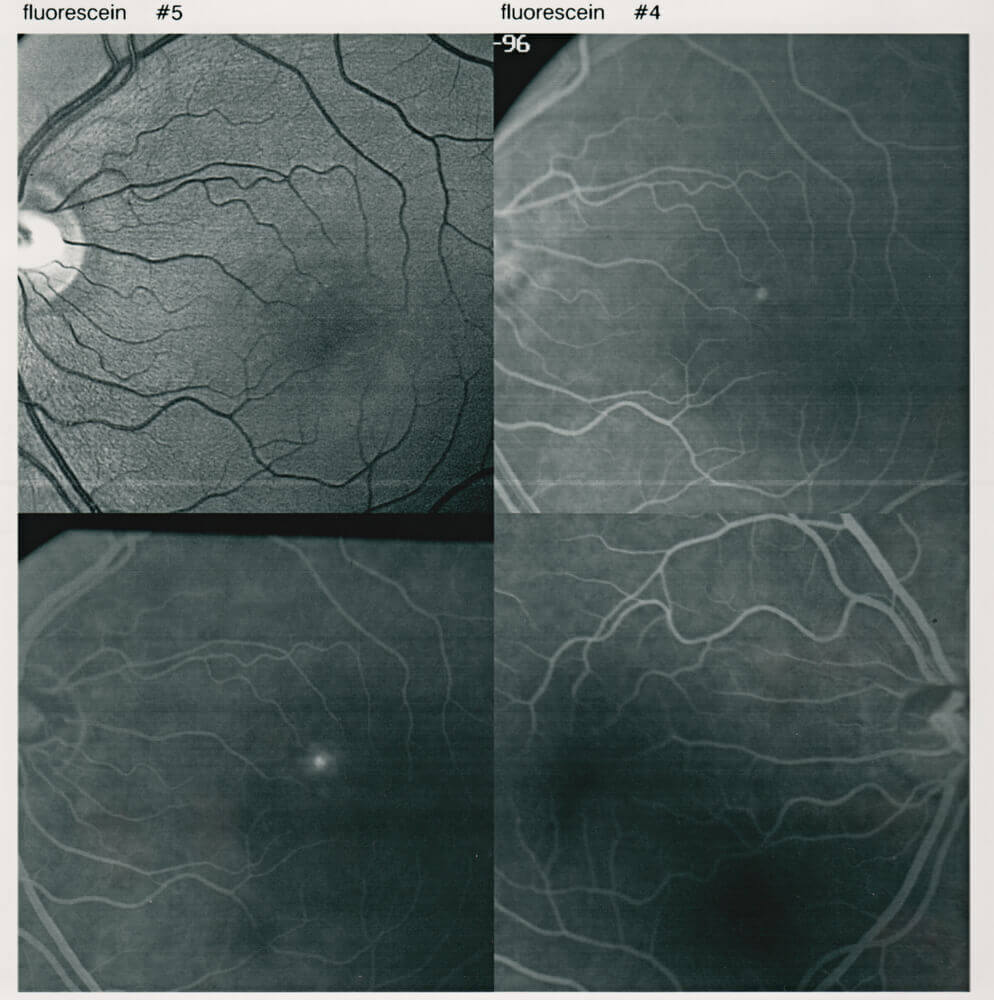
Central Serous Chorioretinopathy Houston Mann Eye Institute Austin
Central serous chorioretinopathy diagnosis and treatment. Caccavale A, Romanazzi F, Imparato M, et al. Low-dose aspirin as treatment for central serous chorioretinopathy. Clin Ophthalmol. 2010; 4: 899-903. doi: 10.2147/opth.s12583. Hanumunthadu D, Tan ACS, Singh SR, Sahu NK, Chhablani J. Management of chronic central serous retinopathy.
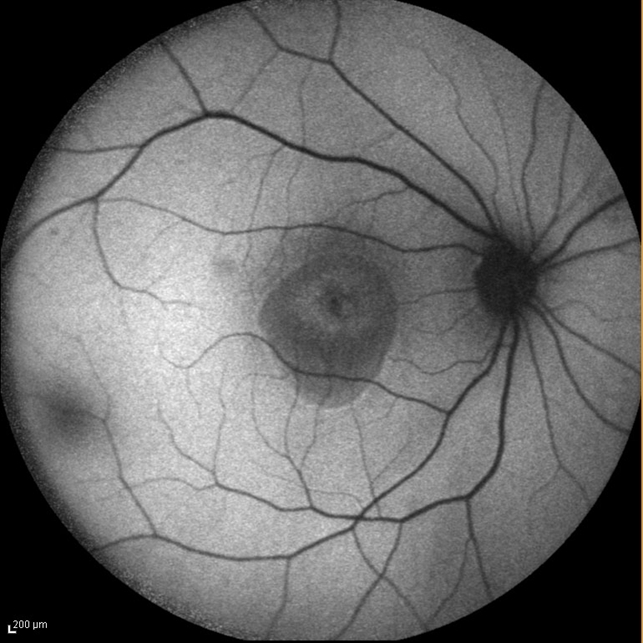
Chronic Central Serous Chorioretinopathy Retina Image Bank
Central serous chorioretinopathy, commonly referred to as CSC, is a condition in which fluid accumulates under the retina, causing a serous (fluid-filled) detachment and vision loss. CSC most often occurs in young and middle-aged adults. For unknown reasons, men develop this condition more commonly than women. Vision loss is usually temporary.

Central Serous Chorioretinopathy with Smokestack Late Phase Retina Image Bank
Central serous retinopathy is an eye condition in which fluid builds up behind the retina and affects your vision. The retina is a thin, sensitive layer of tissue in the back of the eye. It.

Central Serous Retinopathy — STRATHFIELD RETINA CLINIC
Central serous chorioretinopathy is the result of fluid buildup under the retina. This build-up can cause the retina to detach at the macula. This results in distorted, blurry central vision in one or both eyes. Corticosteroid use, stress, middle age and being male increase your risk of developing CSCR. This condition is one of the top 10 most.
.jpg/image-full;max$643,0.ImageHandler)
Central Serous Chorioretinopathy 2 Retina Image Bank
Central Serous Chorioretinopathy Central serous chorioretinopathy, commonly referred to as CSC, is a condition in which fluid accumulates under the retina, causing a serous (fluid-filled) detachment and vision loss. CSC most often occurs in young and middle-aged adults. For unknown reasons, men develop this condition more commonly than women.

Central Serous Chorioretinopathy and Pachychoroid Disease Ento Key
Central Serous Chorioretinopathy (CSCR) is a condition that causes fluid to build up underneath the center of the retina (Macula). Fluid leaks from the blood vessel layer under the retina called the choroid. It is more common in men and typically occurs between the ages of 25 to 50 years.
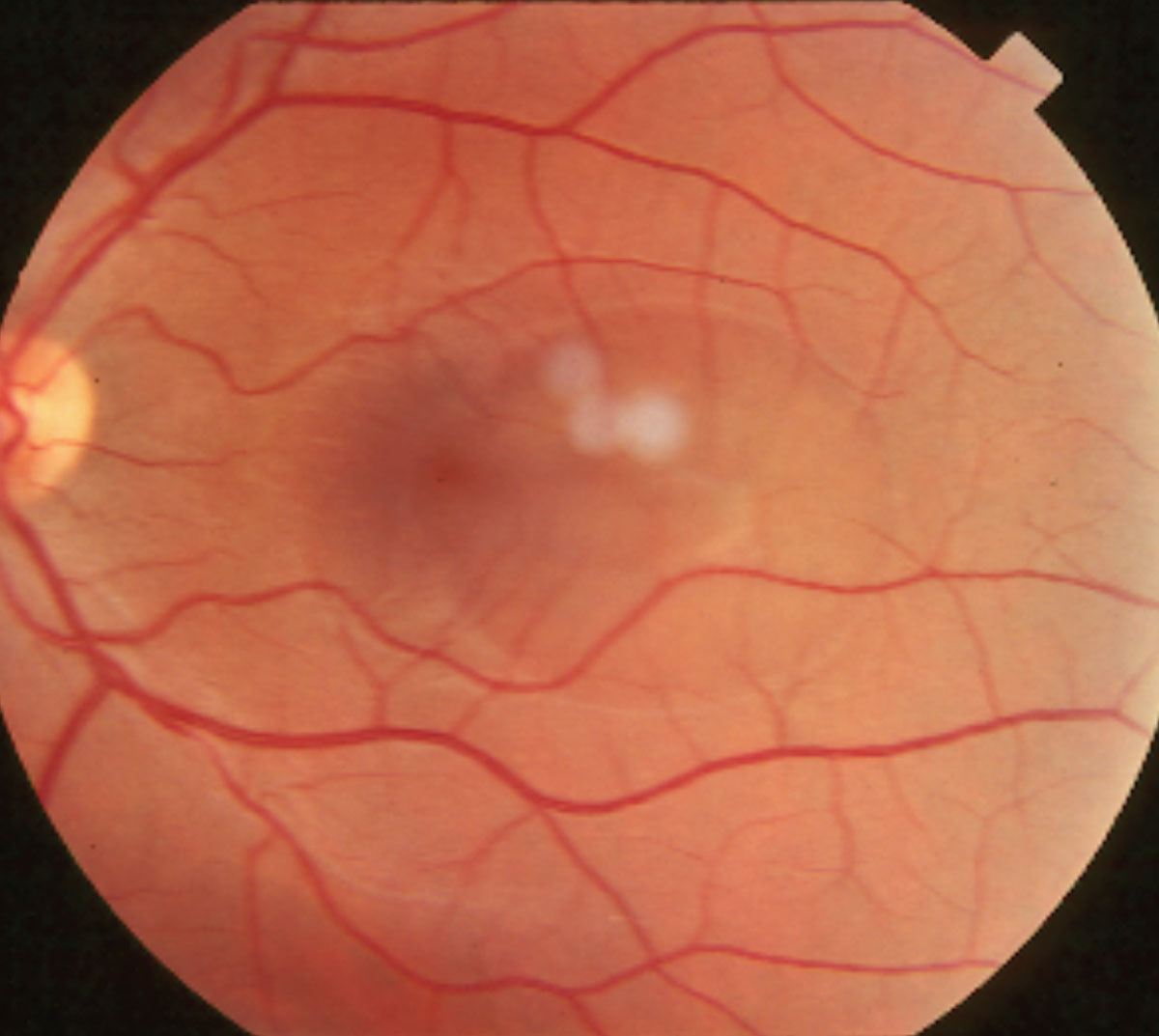
Stressed Out
Central serous chorioretinopathy (CSC) is a pachychoroid spectrum disease characterized by serous detachment of the neurosensory retina with subretinal fluid in young and middle-aged adults. The pathogenesis of CSC is not yet fully understood. However, it is considered a multifactorial disease that is strongly associated with choroidal.
Central serous chorioretinopathy American Academy of Ophthalmology
5 min read. Central serous retinopathy (or CSR, also known as central serous chorioretinopathy, or CSCR), is a disease of the eye, most notably the retina. This condition results from fluid.

Central Serous Chorioretinopathy Smartphone Fundus Image Retina Image Bank
Central serous chorioretinopathy (CSC) is a common retina disease and has a relative high recurrence rate, etiology, and pathogenesis of which remains largely ambiguous. The effects on the retina are usually self-limited, although some people are left with permanent vision loss due to progressive and irreversible photoreceptor damage or retinal.
Central Serous Chorioretinopathy Eye Patient
What Is Central Serous Chorioretinopathy? Central Serous Chorioretinopathy or Central Serous Retinopathy (CSC or CSR) is a disorder that causes the accumulation of fluid under the macula in an otherwise healthy eye. This accumulation of fluid under the macula causes blurring of the central vision in the affected eye.
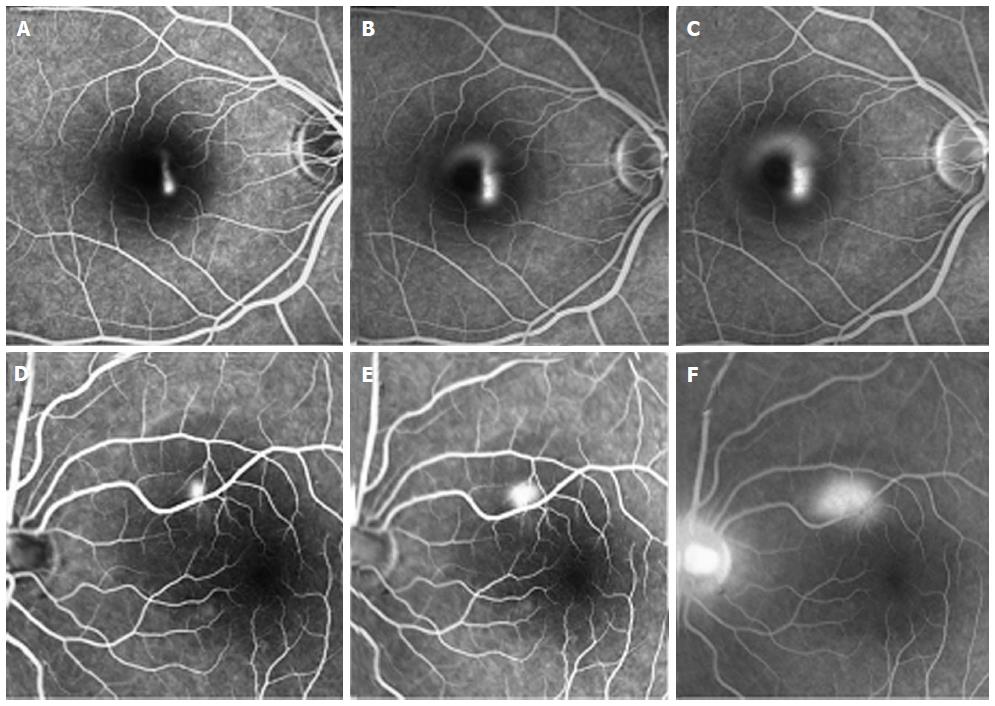
What is new in central serous chorioretinopathy?
Central serous chorioretinopathy (CSC), the fourth most common nonsurgical retinopathy, [ 1] is defined as serous retinal detachment with or without pigment epithelial detachment (PED) most commonly seen in the macular region. It was first described by Von Graffe in 1866. [ 2] Since then, the understanding of the disease has undergone a.

The fundus of the eye of the patient with central serous... Download Scientific Diagram
Central serous retinopathy is a medical condition that occurs when fluid builds up behind the retina in your eye. The fluid can cause your retina to detach, leading to vision problems or vision loss. Your retina is a layer of tissue behind each eye. It senses light and translates it into images your brain can understand.
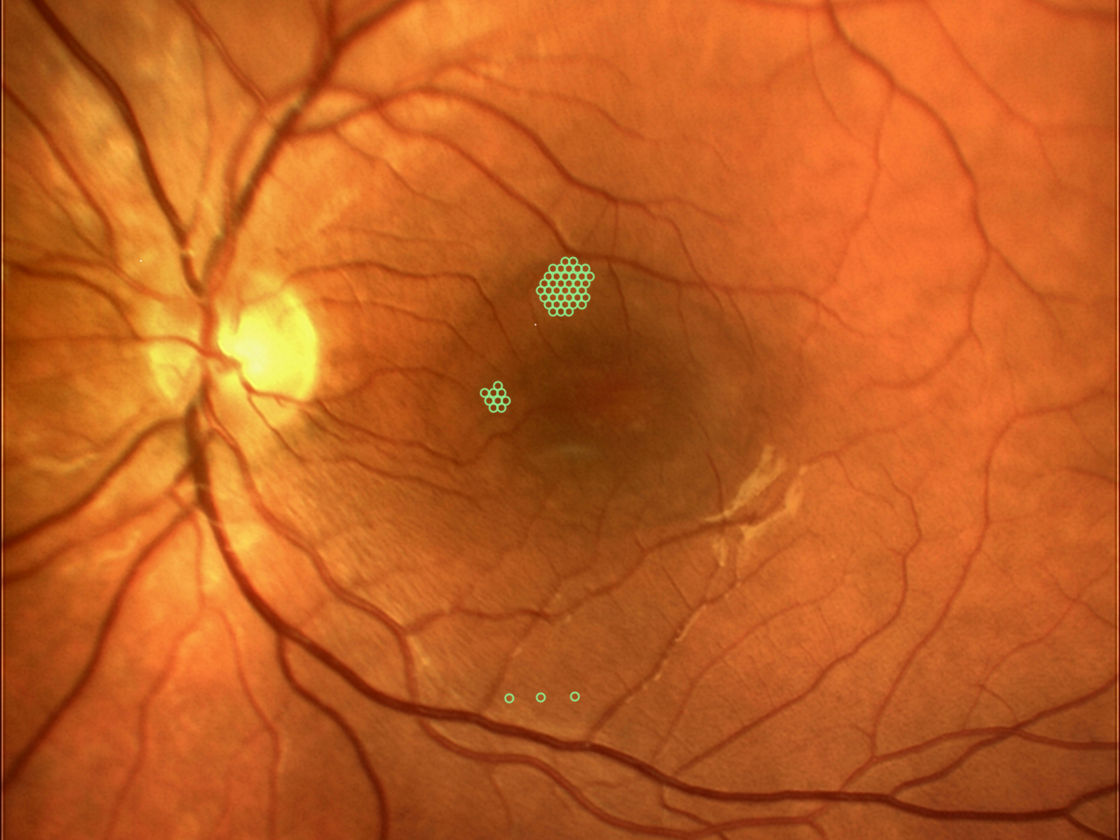
Central Serous Chorioretinopathy
Men are more likely to have complex central serous chorioretinopathy (CSCR) and recurrence compared with women, according to a multimodal imaging-based classification system research, reviewed in the London journal Eye.. Researchers analyzed 109 eyes of 58 adult patients (55 eyes, 28 women [mean age, 40.3±10.2 years; 54 eyes, 30 men [mean age, 47.3±10.3 years]) who had CSCR, underwent.